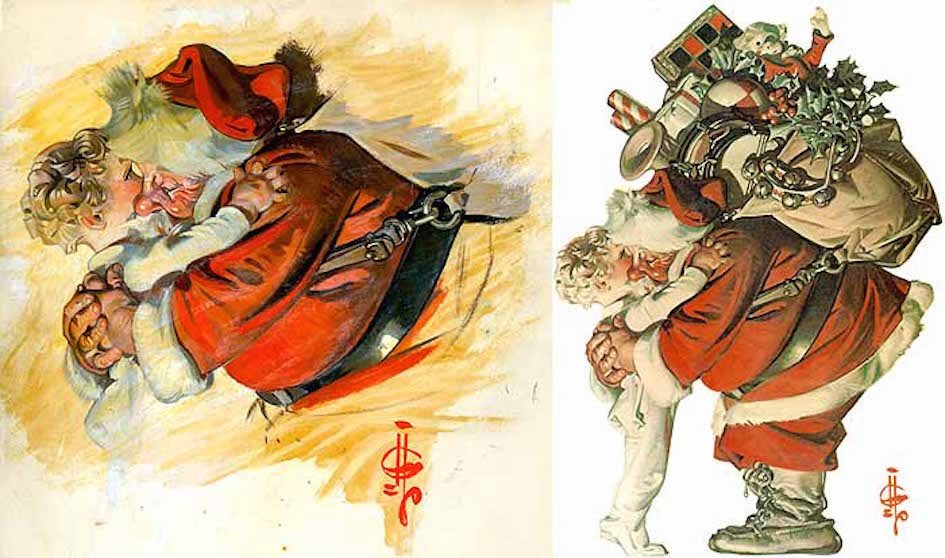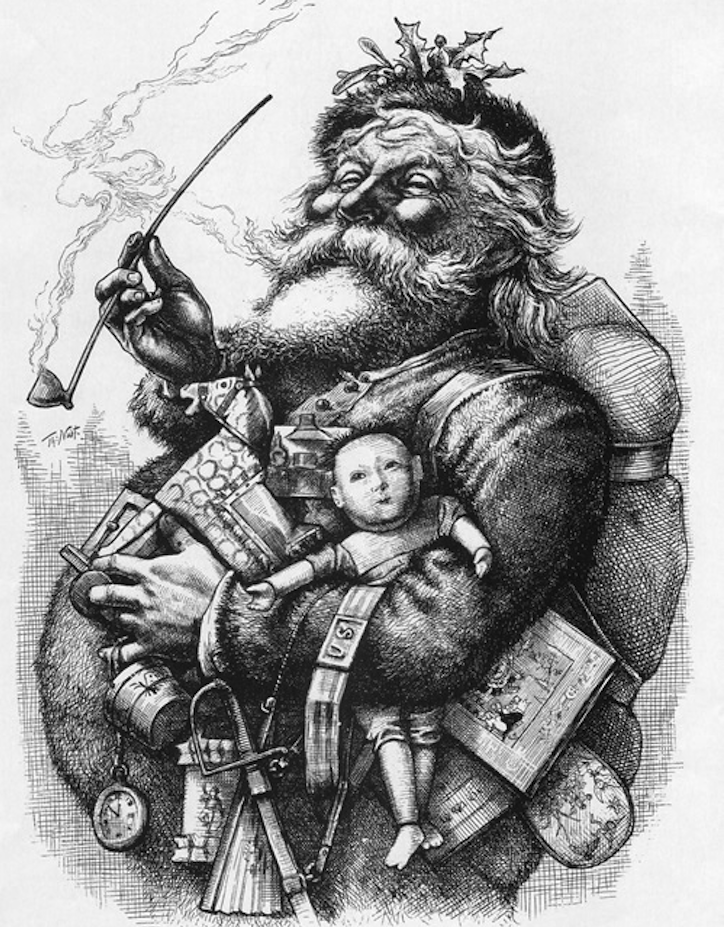
The Man Behind the Story of Santa Claus
St. Nicholas was a bishop who lived in the fourth century AD in a place called Myra in Asia Minor (now Turkey). His rich parents passed away at an early age and willed their wealth to young Nicholas. He was a very kind man and had a reputation for helping the poor while giving secret gifts to people who needed it. Because of his kindness Nicholas was declared a saint.
In sixteenth century Europe, the stories and traditions about St. Nicholas had become unpopular, but someone still had to deliver presents to children during Christmas. In the UK he became “Father Christmas,” a character from old children’s stories; in France he was then known as “Père Nöel;” in Germany he was the “Christ Kind.” In the U.S. his name was originally “Kris Kringle.” Later, however, Dutch settlers in the U.S. took the old stories of St. Nicholas with them and Kris Kringle became “Sinterklaas” or commonly known as “Santa Claus!”
How Coca Cola Co-Branded with Santa Claus
It’s widely believed that today Santa wears a red suit because that’s the colour associated with CocaCola, but this isn’t the case. Before the iconic CocaCola Santa was even created, St. Nick was portrayed by dozens of artists in a wide variety of styles, sizes, and colors. However by the end of the 1920s, a standard American Santa—life-sized in a red, fur-trimmed suit—had emerged from the work of N. C. Wyeth, J. C. Leyendecker, Norman Rockwell, and other popular illustrators.
The image was solidified well before Haddon Sundblom, who in 1931 began thirty-five years of Coca-Cola Santa advertisements that further popularized and firmly established this Santa as an icon of contemporary commercial culture.
Sundblom’s Santa was jolly, and wore the familiar red suit. His Santa radiated warmth and reminded people of their favorite grandfather– a friendly man who lived life to the fullest, loved children, enjoyed a little honest mischief, and feasted on snacks left out for him each Christmas Eve. Coca-Cola’s Christmas campaign featuring this captivating Santa ran year after year. As distribution of Coca-Cola and its ads spread around the world, Sundblom’s Santa Claus became more memorable each season.
The character became so likable, The Coca-Cola Company and Haddon Sundblom struck a partnership that would last for decades. Over a span of 33 years, Haddon Sundblom painted new versions of the “Coca-Cola Santa Claus” for Coke advertising, retail displays, and posters.
Haddon Sundblom passed away in 1976, but The Coca-Cola Company continues to use a variety of his timeless depictions of St. Nicholas in holiday advertising, packaging, and other promotional activities. The classic Coca-Cola Santa images created by Sundblom are as well-known today as the character they represent and have become universally accepted as the personification of Santa Claus for both children and adults.
To sum it up, Santa Claus for Coca Cola was a another brilliant opportunity to strongly establish its brand on a global scale through the well-recognized figure of Father Christmas. Santa Claus represents all the values that, to this day, consistently govern the communication of Coke; happiness and welfare (such as the “Open Happiness” tagline). On top of that, he appeared to wear a red fur-trimmed suit. Couldn’t be more convenient, right?
PS: Happy Holidays to everyone!
Images: J. C. Leyendecker, 1925; Thomas Nast, 1881
